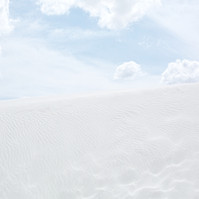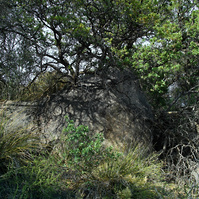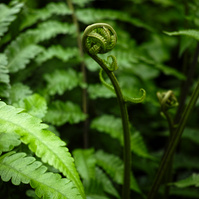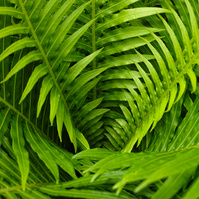Hanging with the Sigma DP Merrill Cameras
July 27, 2023It’s been quite some time since I’ve touched on my Sigma cameras. Specifically, my DP1 and DP2 Merrill cameras. I used to have the DP3 Merrill. But in a fit of mad desperation, I sent it to MPB in exchange for a pittance. I needed the money at the time but now I deeply regret that. I came close to selling my DP1 and DP2 as well. But I just couldn’t do it. Nothing I own renders like my foveons do.
So what makes these cameras so interesting? If you’re here then you’re likely familiar with them already. I don’t need to go into detail about the triple stacked sensor design, which is entirely different from the color filter array used in every other digital camera, whether it’s an iPhone or a Sony a7RV. Except for pure monochrome cameras, that is.
Sigma foveon cameras are strange little beasts. You’ve probably heard that they are low-ISO cameras, which is mostly true. Color photography for a DP Merrill gets dicey past 200.
Black & white images, on the other hand, look great up to ISO 1600. There’s a even trick using Sigma’s proprietary software to get super clean monochrome up to 6400 by isolating the top sensor layer’s data.
For me, it’s all about color. There’s nothing quite like foveon green tones. I love these cameras for trees and plant images. When I look at images from most CFA-using cameras, even my Fujifilm bodies, the tones just don’t quite sit well with me, no matter how much I noodle with them in post. But my Sigmas just SNAP.
There are actually a few iterations of the foveon sensor. Generation 2 used a 5 megapixel triple stacked sensor and was put in DSLR bodies like the SD10 and SD14. While the resolution is lower, I have to say, the color output is superb. So much so that a original DP1 might be in my future.
Generation 3 used a 15-MP 3 layer sensor (Merrill edition). First seen in the SD1 Merrill DSLR - and then the DP Merrill trio, which are compact mirrorless cameras. Sigma eventually came out with a Generation 4 (Quattro edition), which are all mirrorless.
I’ve owned the DP Quattros as well as the SD Quattro. And I ended up settling on the DP Merrills. The Quattros have excellent colors; sometimes even nicer than the Merrills. The shadows lift cleaner and they offer 30% more resolution. You can use ISO 400 and even 800 for color.
Quattro cameras feel something close to a modern body in terms of handling. And the Super Fine Detail mode not only autobrackets for extra dynamic range but processes away most of the color blotching that plagues the shadows of foveon images. So why did I choose the Merrills?
The biggest reason is that in terms of exposure, the Merrill cameras are easier to shoot. Quattros have very little headroom in the highlights. Yet foveon cameras need loads of light, to ensure all 3 layers get saturated. Without enough light, you get weird purple-green color blotches, especially in the shadows. And it gets worse if you lift the shadows even a little.
The Merrill sensor can be safely exposed to the right by a drastic amount. I’ll shoot up to +2 EV to the right. Enough that the histogram looks like a triangle and the LCD shows a clipped mess of blinkies. Since the histogram is based on the JPEG engine of the camera, which is terrible in the DP Merrills, it’s far too conservative. I can then bring the RAW image into Sigma Photo Pro and drop the exposure and highlights. You’ll get an excellent result with next to no clipping, depending on the scene. ETTR also floods the shadows with light; once you drop the exposure back in post, you’ll have little to no foveon color blotching.
In short, the image quality is better whenever you can flood the sensor with light, which is not that difficult. In high contrast scenes you can also recover the highlights with ease using a Merrill. The Quattro will clip easily, leaving burnt white/grey areas in an otherwise nice image.
I also just like the Merrill look. It has this crunchy microcontrast-rich character that’s like nothing else out there. The colors remind me of my old collection of National Geographic magazines from the 70’s and 80’s. That said, you can spice the tones up in Sigma Photo Pro easily enough, adding saturation while preserving the overall vibrance of the tones. The Quattro look is also neat, though not as unique. I like it enough that is I’ll eventually be getting one (or more) again…Foveons are pretty addictive.
Direct comparison between my X100V and the DP1 Merrill with a nice family I met atop the Sandias in New Mexico. The focal lengths don’t match up, of course (28mm vs 35mm ff equivalent). And the white balance isn’t quite there, but close enough. Check out those rendering differences, though! The Fujifilm X100V looks great - yet the Sigma just pops with realism. Especially those juicy reds!
I’m of two minds on Merrill portraits. While the details are insane, they almost add +10 years to the subject. Too much microcontrast and sharpness. The Fujifilm is a CFA-using camera and the interpolation process is more flattering since it evens out skin imperfections.
The clouds are also fascinating; Merrill clouds are a thing, even though no one is sure why they come out looking that way.
It has something to do with the highlights, I think. There’s a subtlety there that other digital cameras lack. It’s no secret that highlight retention is the strength of film, while shadow recovery is what digital cameras are good at. The Merrill doesn’t abruptly clip like a digital image does. Given how hard you can ETTR on a Merrill, I think that’s part of the secret sauce recipe.
Are they fussy cameras to use? Oh, yes. There’s no spray and pray, no insect eye autofocus, no 15 stops of dynamic range, IBIS, or 1000 shots per battery charge here. This is the closest thing to a digital 4 x 5 camera. Stick it on a tripod, shoot at base ISO (which is 200, by the way, not 100), and take your time with the composition.
It’s also film-like in how you have to process the files. The LCD is low resolution by modern standards so it’s hard to gauge the final result. For some, that’s a dealbreaker. For me, it feels like a delightful surprise to get the final image back into Sigma Photo Pro for development. Except when you see that the camera missed focus, which does happen more often than I’d like.
On the other hand, the general pokiness is also an upside! You’re forced to really slow down and consider the scene. If you only have 30-40 shots per battery charge, is this a “worthy” scene or moment? Your digital “film” is expensive! Can I expose and compose in a way that makes the most of the foveon’s strengths? It’s a relaxing way to create images and deeply satisfying to not only get a shot you know is good. But to then see the detail and color-rich result in SPP.
Scenes with details and subtle color shifts are what you want. That makes them INCREDIBLE for nature and landscape photography. These are also subjects that aren’t usually zipping around. So again, great for foveons, which don’t have fast autofocus.
So overall, I think the downsides are overblown. While you get fewer shots overall, I find I get far more keepers with my DP Merrills. Shots that I absolutely love. It’s only a frustrating experience if your expectations aren’t in line with the tech. And you refuse to adapt your style. I’ve never had cameras I’ve come to love more as time goes on.
Just have to get a new DP3 Merrill sometime soon. It’s one of the best things around for macro and flower shots! I’ll leave you with a few taken with just that camera!































